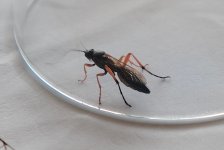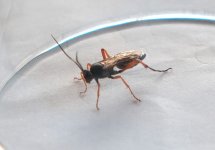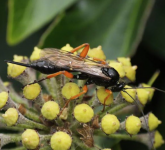Peregrine Took
Well-known member

EDIT: Identified - see post #2.
Can anyone identify this little critter please? I'm in the Cotswolds, UK. The insect was just under an inch, or about 2cm long, with long antenna, black body (no other colour), and bright red legs (slightly overexposed). It flew pretty fast on release. The closest I can find in my butterflies and insects book makes me think it might be a solitary wasp of some sort. Thanks.


Can anyone identify this little critter please? I'm in the Cotswolds, UK. The insect was just under an inch, or about 2cm long, with long antenna, black body (no other colour), and bright red legs (slightly overexposed). It flew pretty fast on release. The closest I can find in my butterflies and insects book makes me think it might be a solitary wasp of some sort. Thanks.


Last edited:




